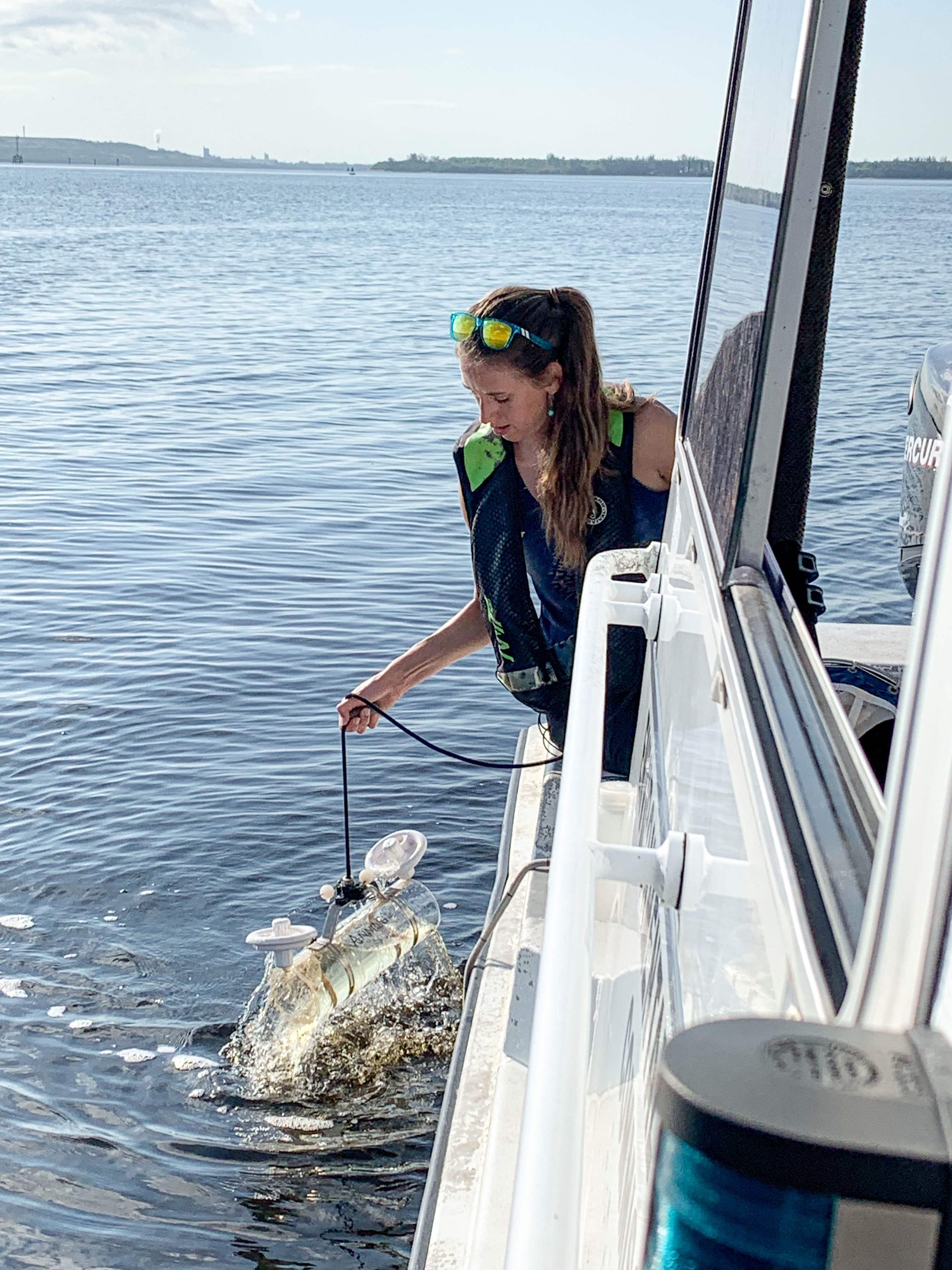Cleanup would be “almost impossible,” so the focus has turned to prevention.

Courtesy of Kinsley McEachern
By Dylan Hart
About four billion microplastics coat the waters of Tampa Bay, according to a new study.
And it seems the pollution is here to stay.
A team of researchers from USF St. Petersburg and Eckerd College conducted the study, including professors David Hastings and Henry Alegria, as well as graduate student Kinsley McEachern.
Microplastics, which are small particles of plastic less than an eighth of an inch, are usually only visible under a microscope. But in such abundance, they can have a serious effect on marine ecosystems. They enter the food chain through “filter feeders,” — animals like clams, sponges or krill — which suck up water and strain it for food particles like plankton.
Through two different methods, the team found that for every gallon of Tampa Bay water, there were about four particles of microplastic. From there, they estimated that there could be anywhere from 1 billion to 8 billion pieces of microplastic in the bay.
Hastings, who recently retired from Eckerd College, found the problem years ago but only recently committed to study it.
“We had been going out for the past seven or eight years as part of research cruises that I did with Eckerd College students,” Hastings said. “We were looking for plankton, but occasionally we’d see a piece of plastic.”
McEachern, a recent graduate of USF St. Petersburg’s Environmental Science and Policy master’s program and the first author of the study, said she took an interest in the topic years ago, but finally found a hook when she saw Hastings report his preliminary findings at a conference.
She asked Hastings to be her mentor and devised the study as her master’s thesis.
From there, McEachern found the Environmental Protection Commission of Hillsborough, which was able to bring her along on water monitoring trips in the bay.
The health effects could go further up the chain, but Hastings said the impact on marine life in Tampa Bay isn’t yet known, and he hopes that further research can discover the effects. McEachern said that she expects future studies to link microplastics and human health as well.
“The real concern is that it turns out that a lot of toxins stick to these plastics in a way that they don’t stick to natural surfaces,” Hastings said. “If this filter feeder is ingesting the plankton, then it’s possible that the toxin could be removed once it’s in the stomach and the organism could be harmed.”
This is the first study of microplastics in Tampa Bay. Because of different sampling methods, it’s hard to compare the bay to other regions. But McEachern said that it’s definitely more polluted than the open ocean.
Cleanup is almost impossible, Hastings said, because of the volume and the minuscule size of plastics in the water. Microplastics would even slip through the tiny gaps in nets they used to collect plankton.
So, instead, the focus is on prevention.
“When I think of what we saw, I think of Tampa Bay having a smog of microplastic particles,” Hastings said. “If it were in the atmosphere, we wouldn’t tolerate a smog, but when there’s a smog of microplastic particles in Tampa Bay, that’s a huge concern.”
Both Hastings and McEachern said that a big way individuals can make an impact is by cutting down on single-use plastics.
“Our relationship with plastic as consumers is a primary reason for there being so much plastic in the ocean,” Hastings said. “We need to examine carefully our consumption of plastic and how we dispose of it. That’s why there’s so much interest in bags, straws and styrofoam.”
He also said that a lot of the plastic particles are fibers from synthetic clothing, which are pushed into Tampa Bay when that clothing is washed. Although there is a filtration system in wastewater treatment, the sheer volume means that there’s some margin of error. Other sources of microplastic pollution include plastic teabags and glitter.
But the biggest changes have to come from policy, so McEachern stressed voting for the environment.
“You really can’t have a healthy economy without a healthy environment,” she said. “Eventually, the impacts catch up with us — why don’t we make changes today to make sure we have a sustainable economy and environment?”



